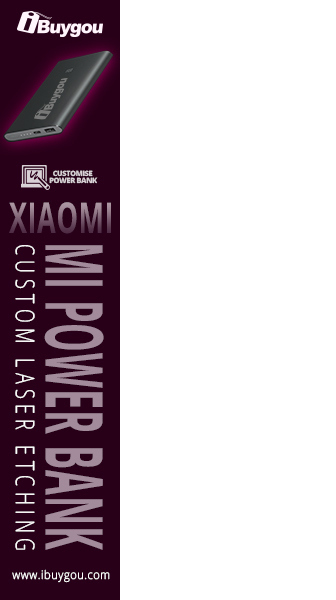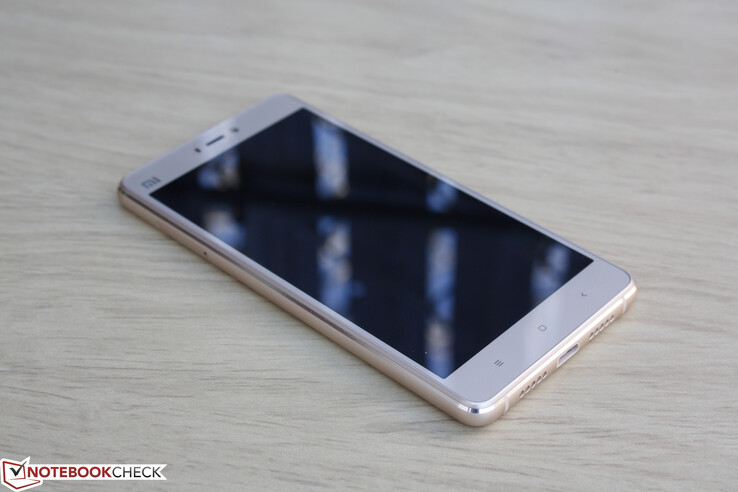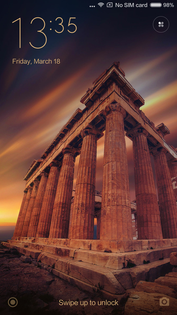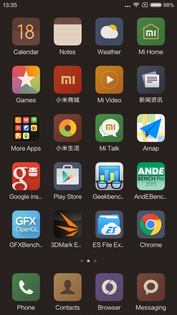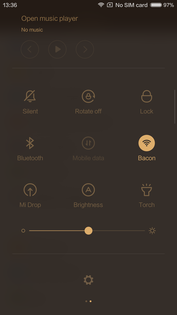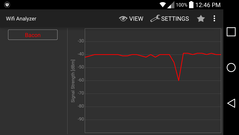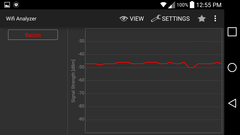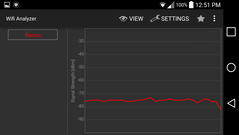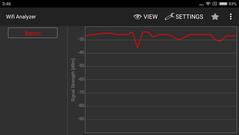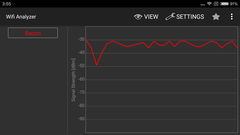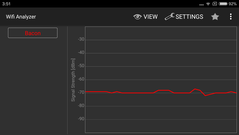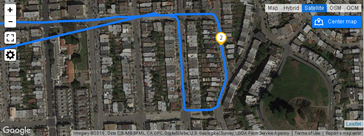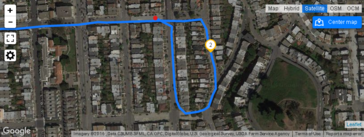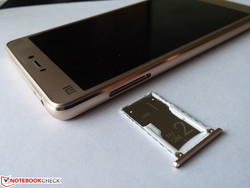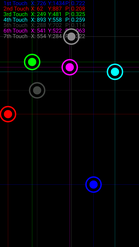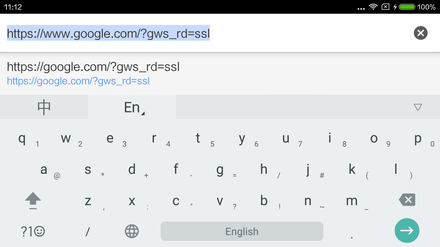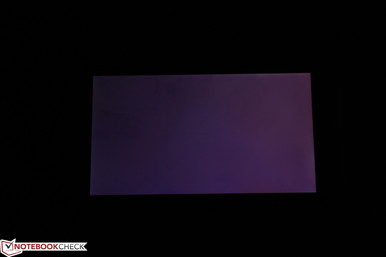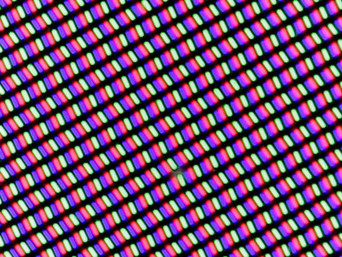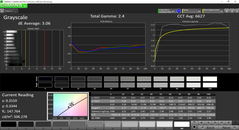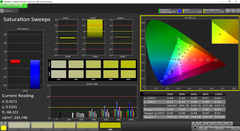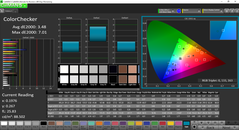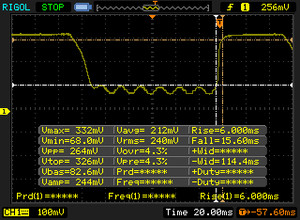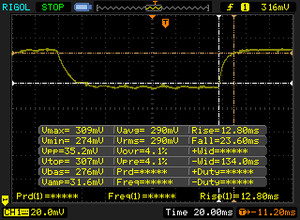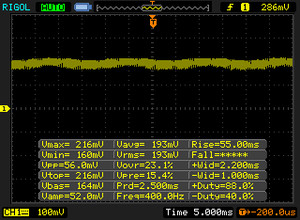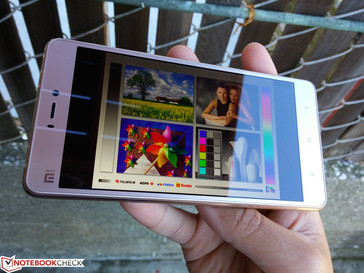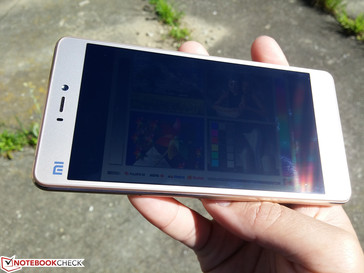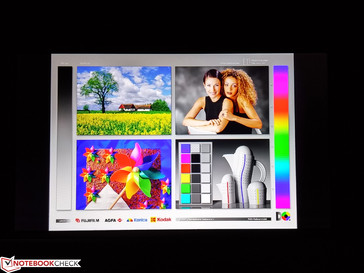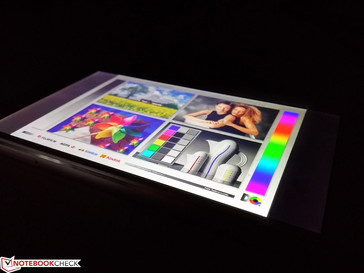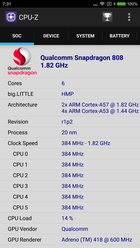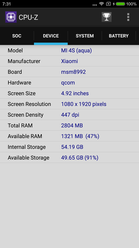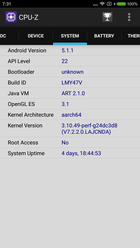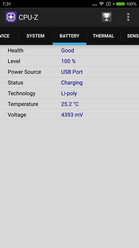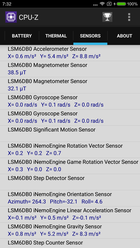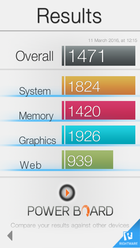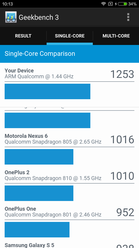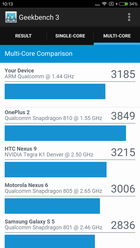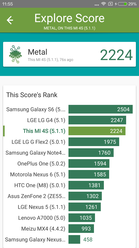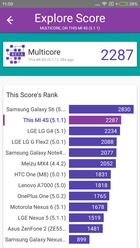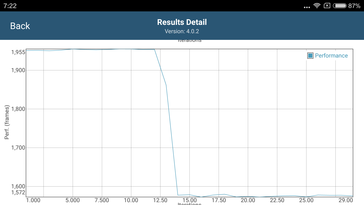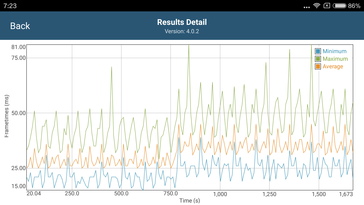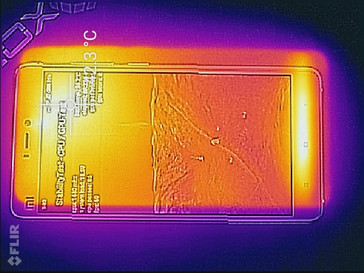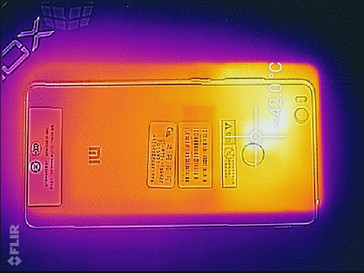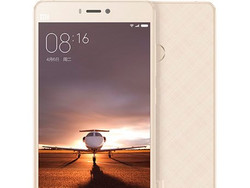Xiaomi Mi 4s Smartphone Review

Xiaomi has been slowly building up from offering inexpensive budget smartphones to more mid-range and high-end models that tend to sell at much higher margins. This jump in quality is apparent when taking a closer look at the Redmi 2 versus its much improved Redmi 3 successor.
The 5-inch Mi 4s is the updated version of the Mi 4 in the same manner as the iPhone 6s is to the iPhone 6. For Xiaomi, however, the Mi 4s is more than just an internal upgrade as the chassis is now thinner and with more features not previously available in the series.
Main competitors to the Mi 4s include the OnePlus X, Asus Zenfone 2, and Google Nexus 5X considering the $300 to $350 price range of the smartphone.
Case
The Mi 4s is available in Black, White, and Gold color options. Our Gold test unit gives off a luxurious luster with at least three different types of surfaces making up the chassis. The glass-covered front is completely flat with almost no rise around the edges and corners. The rounded aluminum sides of the phone are a slippery matte finish with striped chrome-cut edges and corners for glossy accents. Meanwhile, the back of the phone utilizes another smooth layer of glass similar to the recent Galaxy S6 series, but with a cross-diamond pattern underneath to avoid what would have otherwise been a plain plastic look. Even the camera and LED Flash modules are recessed onto the same plane as the glass for a completely flat surface. It's clear that Xiaomi had invested much more in the aesthetics of the design compared to its older generation of plastic smartphones.
Workmanship is nearly perfect around the edges and corners where the different materials meet. Unfortunately on our test unit, we are able to notice a small and depressible gap between the back cover and edge of the smartphone. While this may be more common on smartphones with removable back covers, designs with non-removable battery packs like the Mi 4s are expected to have a much more solid seal around its edges. The potential for gaps is a drawback from not using a unibody design.
Overall rigidity is above average with no creaking or cracks when attempting to twist from the sides or when applying pressure down its center. A bit of bending and warping is possible with a moderate amount of force, but nothing extensive enough to be a cause for concern.
When comparing its size to other 5-inch smartphones, the Mi 4s is thinner and smaller than the Honor 5X and even thinner than the Galaxy S7 by one-tenth of a millimeter. The OnePlus X comes in even thinner than the Mi 4s and with a faster Snapdragon 810 SoC at the cost of much higher surface temperatures. Xiaomi still has the edge in weight as its model is one of the lightest 5-inch smartphones available at 133 grams.
Connectivity
Micro-USB is slowly but surely being phased out in favor of USB Type-C. In this case, the Type-C port is limited to standard USB 2.0 speeds like on the OnePlus 2, so the only benefit here is the hassle-free reversible end. Otherwise, the usual 3.5 mm earphone port is located next to the IR source on top.
There is no integrated NFC available, so contact-less payment is beyond the reach of the Mi 4s.
Software
The MIUI 7.0 software is based on Android 6.0 Marshmallow and is low on extraneous features and background applications. Thus, the system feels swift with few interruptions and popup notifications and is overall closer to stock Android than other custom UIs.
In return, there are numerous pre-installed applications, many of which are geared towards users in Asia with news, apps, and music from the region. The Google Play Store must be installed by the user through means that aren't exactly intuitive.
Communication & GPS
The integrated dual-band (2.4/5 GHz) WLAN supports WiFi Direct and Hotspot for tethering purposes. We experienced no random drops or connectivity issues during our time with the test unit. Reception is better than the LG G3 under the same distances and conditions according to WiFi Analyzer.
GPS accuracy is reliable enough for road navigation. The smartphone is less accurate around turns and corners compared to the Garmin standard, so twists and turns on winding paths will accentuate the weaknesses of the Xiaomi phone when used for GPS tracking.
Telephone & Voice Quality
Officially supported bands include GSM 850/900/1800/1900, HSDPA 850/1900/2100, and 4G LTE Cat 4 150/50 Mbps download/upload. See Xiaomi's specifications on the Mi 4s for a complete list of compatible networks. Access to the Micro-SIM and Nano-SIM tray on the edge of the device will require a sharp pin.
Call quality under the AT&T network is clear, but with a low maximum volume. Thus, voices become much more coherent when switching to speakerphone instead of using the earpiece. As for the LG G3 listener on the other end, the caller was sensitive to any background noises such as traffic or crowds. Our voice was otherwise loud and clear through the Xiaomi. We experienced no consistent static or dropped calls during our time with the test unit.
Cameras & Multimedia
Camera quality from the rear 13 MP sensor is very good with minimal grains and muddiness that tend to be much more common on cheaper smartphones. Images captured with the Mi 4s approach the sharpness of the LG G3 camera, albeit with some caveats that make the Xiaomi fall just short. In particular, brown colors have a tendency to be exhibit a Green tint, so colors are not as natural as they could have been.
Low-light and indoor performances, however, are merely average from the standard f/2.0 aperture lens with image noise becoming much more prevalent. The slow auto-focus is nothing special either as the phone lacks the faster laser auto-focus capabilities of some higher-end models.
Video recording is available up to 1080p30. Unfortunately, quality here is on the blurry side and with muted colors. The slow auto-focus is more of an issue here as well. Slow-motion recording is available only at the 720p setting or lower.
Input Devices
Touchscreen
Touch-typing on the Mi 4s is reliable and equally responsive around the edges and corners as it is towards the center. The output is displayed as fast as the user can type, so the software is able to keep up with fast typists without any issues. The surface is sensitive enough for even the lightest of taps to register consistently. The vibration feedback could have been stronger, but the experience is still excellent overall.
Meanwhile, the rear fingerprint reader works quickly (<1 second) without issues and can save scans of multiple fingers. Unlike the fingerprint readers on some budget devices like the Bluboo Xtouch, your finger does not need to be perfectly oriented the same way each time to unlock the phone. The reader will work just as swiftly if the finger happens to be upside down or sideways.
Display
The 5-inch 1080p screen offers a very sharp picture with colors that seem to pop due to the thin layer of glass on top. The backlight is powerful at almost 500 nits to put the Xiaomi ahead of mainstream models like the One A9 and OnePlus X, yet behind the flagship Galaxy S6 and Xperia Z5 Premium. Measured contrast is excellent at nearly 900:1.
Backlight bleeding isn't an issue around the edges or corners. Instead, the backlight is fairly uneven as the bottom half of the screen is brighter than the top half. The difference is fortunately not significant enough to notice during everyday use, though this is certainly an area to improve upon for future revisions.
| |||||||||||||||||||||||||
Brightness Distribution: 87 %
Center on Battery: 488.2 cd/m²
Contrast: 869:1 (Black: 0.562 cd/m²)
ΔE ColorChecker Calman: 3.48 | ∀{0.5-29.43 Ø4.79}
ΔE Greyscale Calman: 3.06 | ∀{0.09-98 Ø5}
Gamma: 2.4
CCT: 6627 K
| Xiaomi Mi 4s 5", 1920x1080 | Google Nexus 5X 5.2", 1920x1080 | Asus Zenfone 2 ZE500KL 5", 1280x720 | HTC One A9 5", 1920x1080 | OnePlus X 5", 1920x1080 | |
|---|---|---|---|---|---|
| Response Times | |||||
| Response Time Grey 50% / Grey 80% * (ms) | 36.4 ? | ||||
| Response Time Black / White * (ms) | 21.6 ? | ||||
| PWM Frequency (Hz) | 237 ? | ||||
| Screen | 25% | 25% | 8% | -63% | |
| Brightness middle (cd/m²) | 488.2 | 503 3% | 467 -4% | 346 -29% | 312 -36% |
| Brightness (cd/m²) | 471 | 498 6% | 460 -2% | 349 -26% | 314 -33% |
| Brightness Distribution (%) | 87 | 97 11% | 95 9% | 93 7% | 91 5% |
| Black Level * (cd/m²) | 0.562 | 0.38 32% | 0.3 47% | ||
| Contrast (:1) | 869 | 1324 52% | 1557 79% | ||
| Colorchecker dE 2000 * | 3.48 | 2.09 40% | 3.28 6% | 1.55 55% | 6.28 -80% |
| Colorchecker dE 2000 max. * | 7.01 | ||||
| Greyscale dE 2000 * | 3.06 | 2.12 31% | 1.89 38% | 2.05 33% | 8.24 -169% |
| Gamma | 2.4 92% | 2.27 97% | 2.21 100% | 2.15 102% | 2.12 104% |
| CCT | 6627 98% | 6621 98% | 6734 97% | 6267 104% | 8145 80% |
| Total Average (Program / Settings) | 25% /
25% | 25% /
25% | 8% /
8% | -63% /
-63% |
* ... smaller is better
Further display measurements with an X-Rite spectrophotometer reveal good grayscale and color accuracy with no notable outliers. Nonetheless, models like the Nexus 5X and even the One A9 offer more accurate colors and a gamma closer to the 2.2 sRGB ideal. For everyday use, however, the minute differences are not significant.
Display Response Times
| ↔ Response Time Black to White | ||
|---|---|---|
| 21.6 ms ... rise ↗ and fall ↘ combined | ↗ 6 ms rise | |
| ↘ 15.6 ms fall | ||
| The screen shows good response rates in our tests, but may be too slow for competitive gamers. In comparison, all tested devices range from 0.1 (minimum) to 240 (maximum) ms. » 46 % of all devices are better. This means that the measured response time is similar to the average of all tested devices (20.3 ms). | ||
| ↔ Response Time 50% Grey to 80% Grey | ||
| 36.4 ms ... rise ↗ and fall ↘ combined | ↗ 12.8 ms rise | |
| ↘ 23.6 ms fall | ||
| The screen shows slow response rates in our tests and will be unsatisfactory for gamers. In comparison, all tested devices range from 0.165 (minimum) to 636 (maximum) ms. » 51 % of all devices are better. This means that the measured response time is worse than the average of all tested devices (31.7 ms). | ||
Screen Flickering / PWM (Pulse-Width Modulation)
| Screen flickering / PWM not detected | |||
In comparison: 53 % of all tested devices do not use PWM to dim the display. If PWM was detected, an average of 8163 (minimum: 5 - maximum: 343500) Hz was measured. | |||
Outdoor visibility is good under shade and poor under direct sunlight. The backlight is not powerful enough to overcome both glare and sunlight, so onscreen content will appear washed out. Luckily, the wide viewing angles make avoiding glare much easier without sacrificing color quality or contrast. Apparent brightness will be a bit dimmer if viewing from too wide of an angle, which is common amongst IPS panels.
Performance
The Snapdragon 808 is a relatively new high-end processor from Qualcomm that made its debut on last year's flagship LG G4 and is only now trickling down to mainstream devices like the Mi 4s. According to CPU-Z, the hexa-core SoC can run as slow as 384 MHz for power-saving purposes and up to 1.82 GHz when applications demand it. Coupled with the system's 3 GB RAM, the Mi 4s is carrying a hefty amount of power for its class.
Multi-core CPU benchmarks rank the Xiaomi phone alongside systems like the Nexus 6, Nexus 9, and LG G4 while being consistently behind the Galaxy S6 and the OnePlus 2 with the Exynos 7420 and Snapdragon 810 SoCs, respectively. Thus, raw performance sits comfortably between mainstream and pricier flagship smartphones.
| PCMark for Android | |
| Computer Vision score | |
| Motorola Moto X Play | |
| Storage score | |
| Motorola Moto X Play | |
| Work 2.0 performance score | |
| Motorola Moto X Play | |
| Work performance score | |
| Samsung Galaxy S6 Edge | |
| Xiaomi Mi 4s | |
| OnePlus 2 | |
| Motorola Moto G 3. Gen 2015 XT1541 | |
| Motorola Moto X Play | |
| Bluboo Xtouch | |
| AnTuTu v6 - Total Score | |
| OnePlus 2 | |
| Xiaomi Mi 4s | |
| Motorola Moto X Play | |
| Geekbench 3 | |
| 32 Bit Multi-Core Score | |
| Samsung Galaxy S6 Edge | |
| OnePlus 2 | |
| Motorola Moto G 3. Gen 2015 XT1541 | |
| 32 Bit Single-Core Score | |
| Samsung Galaxy S6 Edge | |
| OnePlus 2 | |
| Motorola Moto G 3. Gen 2015 XT1541 | |
| 64 Bit Multi-Core Score | |
| Samsung Galaxy S6 Edge | |
| OnePlus 2 | |
| Xiaomi Mi 4s | |
| Bluboo Xtouch | |
| Motorola Moto X Play | |
| Motorola Moto G 3. Gen 2015 XT1541 | |
| 64 Bit Single-Core Score | |
| Samsung Galaxy S6 Edge | |
| Xiaomi Mi 4s | |
| OnePlus 2 | |
| Motorola Moto X Play | |
| Bluboo Xtouch | |
| Motorola Moto G 3. Gen 2015 XT1541 | |
| Google V8 Ver. 7 - Google V8 Ver. 7 Score | |
| Bluboo Xtouch | |
| Samsung Galaxy S6 Edge | |
| Xiaomi Mi 4s | |
| OnePlus 2 | |
| Motorola Moto X Play | |
| Motorola Moto G 3. Gen 2015 XT1541 | |
| Browsermark - 2.1 | |
| Samsung Galaxy S6 Edge | |
| Xiaomi Mi 4s | |
| OnePlus 2 | |
| Motorola Moto X Play | |
| Bluboo Xtouch | |
| Motorola Moto G 3. Gen 2015 XT1541 | |
| Sunspider | |
| 1.0 Total Score | |
| Motorola Moto G 3. Gen 2015 XT1541 | |
| Bluboo Xtouch | |
| Motorola Moto X Play | |
| OnePlus 2 | |
| Xiaomi Mi 4s | |
| Samsung Galaxy S6 Edge | |
| 0.9.1 Total Score | |
| Bluboo Xtouch | |
| Xiaomi Mi 4s | |
| JetStream 1.1 - Total Score | |
| Samsung Galaxy S6 Edge | |
| Xiaomi Mi 4s | |
| OnePlus 2 | |
| Motorola Moto X Play | |
| Motorola Moto G 3. Gen 2015 XT1541 | |
| Bluboo Xtouch | |
| Mozilla Kraken 1.1 - Total | |
| Bluboo Xtouch | |
| Motorola Moto G 3. Gen 2015 XT1541 | |
| Motorola Moto X Play | |
| OnePlus 2 | |
| Xiaomi Mi 4s | |
| Samsung Galaxy S6 Edge | |
| Octane V2 - Total Score | |
| Samsung Galaxy S6 Edge | |
| Xiaomi Mi 4s | |
| OnePlus 2 | |
| Motorola Moto X Play | |
| Motorola Moto G 3. Gen 2015 XT1541 | |
| Bluboo Xtouch | |
| WebXPRT 2015 - Overall | |
| Xiaomi Mi 4s | |
| OnePlus 2 | |
| Bluboo Xtouch | |
| Motorola Moto X Play | |
| Motorola Moto G 3. Gen 2015 XT1541 | |
| Quadrant Standard Edition 2.0 - --- | |
| Samsung Galaxy S6 Edge | |
| OnePlus 2 | |
| Xiaomi Mi 4s | |
| Bluboo Xtouch | |
| Motorola Moto X Play | |
| Motorola Moto G 3. Gen 2015 XT1541 | |
| Motorola Moto G 3. Gen 2015 XT1541 | |
* ... smaller is better
Storage Devices
Though our test unit is the 64 GB version, a 16 GB Mi 4s model is also available. Transfer rates according to AndroBench are consistently ahead of the competition in the mainstream price category. Its sequential write rates in particular are extremely fast and even edges out the Galaxy S6 Edge just slightly. Otherwise, the Samsung flagship outclasses the Xiaomi in sequential read speeds and random read and write speeds.
MicroSD is supported for even more storage. Note that the card slot uses the same slot as the Nano-SIM card, so both cannot be utilized simultaneously.
GPU Performance
The integrated Adreno 418 is significantly ahead of the older Adreno 405 according to 3DMark benchmarks, but is still much slower than the high-end Mali-T760 or Adreno 430 as found in the Galaxy S6 and Xperia Z5 Premium, respectively. All titles from the Play Store should still be more than playable and we experienced no major stuttering when running Asphalt 8 or NOVA 3.
Minor throttling will occur according to the GFXBench Battery Life test. Average frame times see a sharp increase roughly halfway into the half-hour long stress test. While the throttling isn't significant enough to affect everyday use, users playing games will notice the increase in surface temperatures much more dramatically than any potential performance dips during extended use.
| 3DMark | |
| 1920x1080 Ice Storm Extreme Physics | |
| Xiaomi Mi 4s | |
| Motorola Moto G 3. Gen 2015 XT1541 | |
| HTC One A9 | |
| Bluboo Xtouch | |
| 1920x1080 Ice Storm Extreme Graphics | |
| Xiaomi Mi 4s | |
| HTC One A9 | |
| Bluboo Xtouch | |
| Motorola Moto G 3. Gen 2015 XT1541 | |
| 1920x1080 Ice Storm Extreme Score | |
| Xiaomi Mi 4s | |
| HTC One A9 | |
| Bluboo Xtouch | |
| Motorola Moto G 3. Gen 2015 XT1541 | |
| Lightmark - 1920x1080 1080p | |
| Sony Xperia Z5 Premium | |
| Samsung Galaxy S6 Edge+ | |
| Xiaomi Mi 4s | |
| Motorola Moto G 3. Gen 2015 XT1541 | |
Emissions
Temperature
Surface temperatures when idling are flat across the board with no significant hot spots. Medium workloads and browsing will warm the smartphone quite quickly and gaming can bring it to near uncomfortable levels. Playing games like Asphalt 8, for example, is difficult on the palms since the surfaces of the smartphone are much warmer on the sides than they are towards the center. The dedicated front Android keys also become quite warm.
Competing models like the OnePlus X and HTC One A9 also reach high surface temperatures averaging nearly 40 C under extreme conditions while the Nexus 5X and Zenfone 2 run comparatively cooler.
(±) The maximum temperature on the upper side is 43.6 °C / 110 F, compared to the average of 35.2 °C / 95 F, ranging from 21.9 to 247 °C for the class Smartphone.
(±) The bottom heats up to a maximum of 43 °C / 109 F, compared to the average of 34 °C / 93 F
(+) In idle usage, the average temperature for the upper side is 22.7 °C / 73 F, compared to the device average of 32.9 °C / 91 F.
Speakers
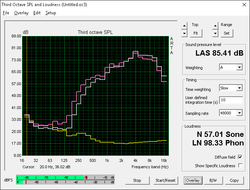
The single speaker lies to the right of the USB port behind the set of five holes. The symmetric design suggests stereo speakers, but the opposite set of grilles houses the microphone instead. It can be easy to cover up the speaker grilles when in Landscape mode due to their positioning on the bottom edge.
Sound quality is good for a smartphone in that sounds feel balanced with no degradation even on higher volume settings. Thus, it avoids the "tin can" quality common on cheaper models. Low frequencies are barely audible according to our measurements, which shouldn't be a surprise considering the size.
Energy Management
Power Consumption
The Mi 4s is certainly a power-hungry smartphone even when sitting idle on a full charge. Its power demands are higher than most competing 5-inch smartphones at every tested condition from idling at minimum brightness to benchmark stress testing at maximum brightness.
| Xiaomi Mi 4s Adreno 418, 808 MSM8992, 64 GB eMMC Flash | Google Nexus 5X Adreno 418, 808 MSM8992, 32 GB eMMC Flash | Asus Zenfone 2 ZE500KL Adreno 306, 410 APQ8016, 16 GB eMMC Flash | HTC One A9 Adreno 405, 617 MSM8952, 16 GB eMMC Flash | OnePlus X Adreno 330, 801 MSM8974AA, 16 GB eMMC Flash | |
|---|---|---|---|---|---|
| Power Consumption | 28% | 57% | 38% | 56% | |
| Idle Minimum * (Watt) | 1.4 | 0.55 61% | 0.5 64% | 0.9 36% | 0.6 57% |
| Idle Average * (Watt) | 2.15 | 1.44 33% | 0.9 58% | 1.2 44% | 0.91 58% |
| Idle Maximum * (Watt) | 2.33 | 1.9 18% | 1.1 53% | 1.4 40% | 1.12 52% |
| Load Average * (Watt) | 6.41 | 3.36 48% | 2.4 63% | 3.8 41% | 3.04 53% |
| Load Maximum * (Watt) | 8.11 | 9.76 -20% | 4.3 47% | 5.9 27% | 3.2 61% |
* ... smaller is better
Battery Life
Fortunately, the Xiaomi carries a dense battery pack to compensate for the higher power draw. This also means that runtimes aren't necessarily any longer than competing models. We were able to clock in just over six hours of constant WLAN use at a 150 nit brightness setting, which is a low average for its size class. The Nexus 5X and OnePlus X can last for noticeably longer under similar testing conditions.
Charging via an outlet will take approximately two hours from near zero to full. Charging via a standard USB port will take much longer.
| Xiaomi Mi 4s 3260 mAh | Google Nexus 5X 2700 mAh | Asus Zenfone 2 ZE500KL 2070 mAh | HTC One A9 2150 mAh | OnePlus X 2525 mAh | |
|---|---|---|---|---|---|
| Battery runtime | 23% | -26% | -9% | 35% | |
| Reader / Idle (h) | 25 | 29.6 18% | 19.2 -23% | 16.1 -36% | |
| WiFi v1.3 (h) | 6.1 | 6.9 13% | 4.5 -26% | 6.1 0% | 9.2 51% |
| Load (h) | 3 | 4.1 37% | 2.9 -3% | 5.7 90% |
Pros
Cons
Verdict
It's hard to find major faults with the Mi 4s. Performance is at the upper echelon of a mainstream smartphone and its design gives an impression that is costlier than its retail price would otherwise suggest. Display quality is excellent and with a strong backlight while the fingerprint reader, dual SIM capabilities, MicroSD reader, and very light weight only add to the list of advantages. The Mi 4s feels very balanced with no one characteristic falling short of expectations.
Instead, the Mi 4s features a fair number of smaller downsides that separate it from phones almost twice its retail price. Its display backlight is a bit uneven and our test model exhibited a small but noticeable gap between the edges of the chassis. Auxiliary features like NFC and wireless charging are missing and its USB Type-C port is limited to USB 2.0 specifications. Battery life and surface temperatures aren't horrible, but have a lot of room for improvement.
The $300 to $350 retail price, however, pits the Mi 4s directly against the Nexus 5X. The slightly larger and brighter screen of the Nexus, longer battery life, lower temperatures, NFC, and pure Android experience are all valid reasons to choose the Google phone over the Xiaomi. If the design, dual SIM, and MicroSD capabilities of the Xiaomi phone are more appealing, then the Mi 4s has the slight edge.
Attractively designed smartphone with better-than-average stats from bottom to top. A few aspects are less than stellar where other similarly priced mainstream smartphones are able to leapfrog over the Xiaomi.
Xiaomi Mi 4s
- 04/21/2016 v5.1 (old)
Allen Ngo




